Code
HCS17520
Weight
100 gm / 0.22 lbs
Size
Height
70cm (28") Width
35cm (14") Material
Handmade Cotton Canvas
Availability
Available
Date Added
2019-10-15 04:22:00
Note : We used to sell this product 6 years ago so it may no longer be in our stock.
It is possible that we still have it with our suppliers but the price could be different from before.
Feel free to order. We will verify availability and inform you promptly.
It is possible that we still have it with our suppliers but the price could be different from before.
Feel free to order. We will verify availability and inform you promptly.

Safe Payment
We accept Paypal, Money Transfer, Bank Transfer
Confidence
Protection covers your purchase and personal data.
Worldwide Delivery
We ship Worldwide, except Russia.Shipping cost US$25.2 for upto 0.5 kgs

Hotline
Talk to help line for your question on 9841267335Introduction to Thangka
A thangka, also known as tangka, thanka, or tanka, is a vibrant and intricate Tibetan Buddhist painting that serves as a visual representation of spiritual teachings. Crafted with meticulous detail on cotton or silk appliqué, thangkas depict a wide range of subjects including Buddhist deities, sacred scenes, mandalas, and narrative stories. These sacred artworks are traditionally kept unframed and rolled up for storage, resembling ancient scrolls. To protect their delicate nature, thangkas are mounted on textile backings and often adorned with a silk cover on the front. Proper preservation in dry environments is crucial to maintain the integrity and longevity of the silk. Read More . . .
A thangka, also known as tangka, thanka, or tanka, is a vibrant and intricate Tibetan Buddhist painting that serves as a visual representation of spiritual teachings. Crafted with meticulous detail on cotton or silk appliqué, thangkas depict a wide range of subjects including Buddhist deities, sacred scenes, mandalas, and narrative stories. These sacred artworks are traditionally kept unframed and rolled up for storage, resembling ancient scrolls. To protect their delicate nature, thangkas are mounted on textile backings and often adorned with a silk cover on the front. Proper preservation in dry environments is crucial to maintain the integrity and longevity of the silk. Read More . . .
An Introduction to Samantabadra :
The image of Samantabhadra is one of the oldest & among the most complex Buddhism, because of its simplicity & because the figures bear no symbolic objects (accoutrements) which otherwise define the form. Yet most people realise that there is some profound underlying meaning behind the form. The represents the realisation & flowering of pure consciousness. Owing to its simplicity, there are several Samantabhadra interpretations & meanings attached to the form.
The central concepts regarding the image
1. The original self which is perceived a pure awoken consciousness [Skt. bodhi]. The Awoken self [viz. spiritual nature] which realises the delusion of the material world which is the common perception of reality & in doing so is liberated.
1b.Understanding of the sun & moon, which themselves represent time {place} & the human condition respectively.
2a. The eternal Present moment which from the Awoken Mind of bodhi realises the union of the past, present & future.
3. The origin of all form out of which all form is derived & within to which all form dissolves into Nothingness. The nature of truth of reality, explored by the Buddhist Early Schools. These two leading schools are Sunyavada [aka. Madyamanka] & Yogacara. The realisation of the this truth of reality generates the Boddhi-sattva [the enlightened being of 'pure consciousness'.
4. According to Vajrayana Buddhism all Deities & Dakinis arose out of Samantabhadra. This idea is especially connected ot the Dhyana Buddha Familiies of Amitabha, Akshobhya, Amoghasiddhi, Ratnasambhava & Vairochana 5. Bodhissatva & figure of the Lotus Sutra [Skt. Avatamsaka Sutra] made the 10 vows to guide a bodhisattva.
Iconography :The central concepts regarding the image
1. The original self which is perceived a pure awoken consciousness [Skt. bodhi]. The Awoken self [viz. spiritual nature] which realises the delusion of the material world which is the common perception of reality & in doing so is liberated.
1b.Understanding of the sun & moon, which themselves represent time {place} & the human condition respectively.
2a. The eternal Present moment which from the Awoken Mind of bodhi realises the union of the past, present & future.
3. The origin of all form out of which all form is derived & within to which all form dissolves into Nothingness. The nature of truth of reality, explored by the Buddhist Early Schools. These two leading schools are Sunyavada [aka. Madyamanka] & Yogacara. The realisation of the this truth of reality generates the Boddhi-sattva [the enlightened being of 'pure consciousness'.
4. According to Vajrayana Buddhism all Deities & Dakinis arose out of Samantabhadra. This idea is especially connected ot the Dhyana Buddha Familiies of Amitabha, Akshobhya, Amoghasiddhi, Ratnasambhava & Vairochana 5. Bodhissatva & figure of the Lotus Sutra [Skt. Avatamsaka Sutra] made the 10 vows to guide a bodhisattva.
Samantabhadra also known as Visvabhadra, is naked called 'sky clad' , presented embracing figures the white female figure is called Samantabhadri in an body position [Skt. Asana] called Yib-Yum togetherness known as the body of blissful union called Sambhogakaya. The word Samantabhadra means Universal loving Virtue. A union of the inner and outer world. The principle of duality is visualized in male & female, dark-light, love-hate, day & night. The co-emergence [Skt. Sahaja] of wisdom [Skt. Prajna] with fitness of action [Skt. Upaya] which is similar to compassion leads one to a state of Great Bliss [Skt. Mahasukha]. The state of Great Bliss is akin to individual Nirvana.The eight embedded jewels represent the Eightfold Path realised by Sakyamuni. There is a small mirror [Skt. Aina or Darpana] representing introspection, sight or form together with a jewel offering in the foreground. The two hand symbols [Tib. Ting Sha] represent the sense offering of sound. The rainbow beams arising from the crimson nimbus around the head of Samanta Bhadra represent a mastery of Boddhi Nature & one manifestation of the Sambhogakaya is the Rainbow Body. There is a small mirror [Skt. Aina or Darpana] representing introspection, sight or form together with a jewel offering in the foreground. The two hand symbols [Tib. Ting-Sha] represent the sense offering of sound. The rainbow beams arising from the crimson nimbus around the head of Samanta Bhadra represent a mastery of Boddhi Nature & one manifestation of the Sambhogakaya is the Rainbow Body. The co-emergence [Skt. Sahaja] of wisdom [Skt. Prajna] withfitness of action [Skt. Upaya] which is similar to compassion leads one to a state of Great Bliss [Skt. Mahasukha].
Commentary :1. The image of Samantabhadra represents a return to & understanding of our original self . This original self is perceived as a pure & blissful (happy). This position of understanding is perceived as pure awareness devoid of the delusion generated by greed [thirst - Skt. tanha]. & hatred [Skt. Dhosa]. Greed for instance makes us accumulate material wealth, an emotional & physical dependence on material things. Hatred is perceived as jealousy, envy. These obscure our original nature & the real happiness. This causes suffering which is cyclical [Skt. Samsara] & self-perpetuating. The paradox here is that the freedom of self is attained by having less & not more. By giving not taking, by relinquishing not gathering & so forth. The position of pure understanding is a position attained through deep thought & applied understanding. As we proceed we awaken to the pure consciousness [Skt. bodhi]. The word Buddha is Sanskrit which means to be awake or to be awoken.
Take the example of a carefree, spontaneous & happy child compared to a stressed, tired & unhappy adult. But this state of pure consciousness does not mean we have to become children again. This is merely a good example of how change can not always be for the better. The Sambhogaya state which Samantabhadra is depicted is attained though understanding & by realising the delusion of the material world. The blissful union is one of transcendent understanding & liberated awareness rather than the spontaneous naivety of a child. B. 1b. The union of the sun & moon, which themselves represent time {place} & the human condition respectively. It is beyond the common perception of the cyclical sun & moon that a person can enter the Dharmakaya & 4th Vajrakaya realms.
2. Samantabhadra symbolises the union of two. In Hinduism this union is perceived as a union of the atman [the self] with the Brahman [infinite universe]. But in Buddhism the Brahman is perceived as merely another aspect of form, & so in being a described form a veil hindering the realisation of pure consciousness. In Buddhism this union usually refers to two leading ideas which are A. The eternal Present Moment which from the origin, the Awoken Mind of bodhi realises the union of the past, present & future within the ever flowering moment of conscious reality. The blue figure of the past embraces the white figure representing the future within the eternal present. In this way Samantabhadra presents timeless awareness who was existing befoe the very notion of time itself.
Although the school of Yogācāra evolved in the 4th CE much later than the original idea of Samantabhadra, the figure of Samantabhadra is just as useful for meditating on the Principle. The discourse is founded on the existential truth of the human condition: there is nothing that humans experience that is not mediated by mind. Yogācāra thinkers did not focus on consciousness to assert it as ultimately real (Yogācāra claims consciousness is only conventionally real since it arises from moment to moment due to fluctuating causes and conditions), but rather because it is the cause of the karmic problem they are seeking to eliminate. This is to say understand original nothingness it is worthwhile reflecting on momentariness & the transitionb of one moment to the other. In Buddhism, consciousness-only or mind-only [Skt. vijñapti-mātratā, citta-mātra] is a theory according to which unenlightened conscious experience is nothing but false discriminations or imaginations. Also known as "Yogācāra-Svatantrika-Mādhyamaka" by the Tibetan tradition. In his view the Mādhyamika [aka. Sunyavada position is ultimately true and at the same time the mind-only view is a useful way to relate to conventionalities and progress students more skillfully toward the ultimate.
3. The image of Samantabhadra embodies the idea origin of phenomena which is perceived as nothingness. Phenomenal Thought-Form, including the painting of Samantabhadra itself, is believed to be derived from an original simple form. This original form is itself a illusion & ultimately nothingness. That all objects are dependent on causes & conditions which caused the object to be form which were themselves in turn dependent on others causes & conditions & so on & the ultimate emptiness of the constantly changing nature of all things. Since everything is nothingness there is a lack of autonomous existence [Skt. Nihsvabhava]. This is related principle of dependent origination of phenomena [Skt. Pratityasamutpada]. [Skt.] By the 11th CE Tibetan Buddhists in such as Patsap Drak categorised this idea into Prasangika & Svatantrika. Out of which all form is derived & within to which all form dissolves into Nothingness. This is realisation of the Sunyavada [Madyamanka] & Yogacara Schools, & is more completely explained in the Nagarjuna Tablet.
4. Samantabhadra is more commonly associated with emanation of Deific thought-form, i.e. all the Vajrayana Buddhist Deities & Dakinis which arise out of the original inception of Samantabhadra. This idea is particularly connected to Nepalese & Tibetan Buddhism & the concept of Dhyana 'Transcendent' Buddha Families of Amitabha, Akshobhya, Amoghasiddhi, Ratnasambhava & Vairochana. However, the Kagyu & Gelug schools use Vajradhara to represent the Original Buddha.
5. Samantabhadra is a key figure in the Flower Garland Sutra, particularly the last chapter, the Gandhavyuha Sutra. The Gandavyuha Sutra details the journey of the youth Sudhana, who undertakes a pilgrimage at the behest of the bodhisattva Manjushree. Sudhana will converse with 52 masters in his quest for enlightenment. The antepenultimate master of Sudhana's pilgrimage is Maitreya. It is here that Sudhana encounters The Tower of Maitreya, which along with Indra's net is one of the most startling metaphors for the infinite to emerge in the history of literature across cultures. In the middle of the great tower... he saw the billion-world universe... and everywhere there was Sudhana at his feet... Thus Sudhana saw Maitreya's practices of... transcendence over countless eons [Skt. kalpa], from each of the squares of the check board wall... In the same way Sudhana... saw the whole supernal manifestation, was perfectly aware it, understood it, contemplated it, used it as a means, beheld it, and saw himself there. In the climax of the Gandhavyuha Sutra, the student Sudhana meets the Bodhisattva Samantabhadra, who teaches him that wisdom only exists for the sake of putting it into practice; that it is only good insofar as it benefits all living beings.
Application in Daily Life :Take the example of a carefree, spontaneous & happy child compared to a stressed, tired & unhappy adult. But this state of pure consciousness does not mean we have to become children again. This is merely a good example of how change can not always be for the better. The Sambhogaya state which Samantabhadra is depicted is attained though understanding & by realising the delusion of the material world. The blissful union is one of transcendent understanding & liberated awareness rather than the spontaneous naivety of a child. B. 1b. The union of the sun & moon, which themselves represent time {place} & the human condition respectively. It is beyond the common perception of the cyclical sun & moon that a person can enter the Dharmakaya & 4th Vajrakaya realms.
2. Samantabhadra symbolises the union of two. In Hinduism this union is perceived as a union of the atman [the self] with the Brahman [infinite universe]. But in Buddhism the Brahman is perceived as merely another aspect of form, & so in being a described form a veil hindering the realisation of pure consciousness. In Buddhism this union usually refers to two leading ideas which are A. The eternal Present Moment which from the origin, the Awoken Mind of bodhi realises the union of the past, present & future within the ever flowering moment of conscious reality. The blue figure of the past embraces the white figure representing the future within the eternal present. In this way Samantabhadra presents timeless awareness who was existing befoe the very notion of time itself.
Although the school of Yogācāra evolved in the 4th CE much later than the original idea of Samantabhadra, the figure of Samantabhadra is just as useful for meditating on the Principle. The discourse is founded on the existential truth of the human condition: there is nothing that humans experience that is not mediated by mind. Yogācāra thinkers did not focus on consciousness to assert it as ultimately real (Yogācāra claims consciousness is only conventionally real since it arises from moment to moment due to fluctuating causes and conditions), but rather because it is the cause of the karmic problem they are seeking to eliminate. This is to say understand original nothingness it is worthwhile reflecting on momentariness & the transitionb of one moment to the other. In Buddhism, consciousness-only or mind-only [Skt. vijñapti-mātratā, citta-mātra] is a theory according to which unenlightened conscious experience is nothing but false discriminations or imaginations. Also known as "Yogācāra-Svatantrika-Mādhyamaka" by the Tibetan tradition. In his view the Mādhyamika [aka. Sunyavada position is ultimately true and at the same time the mind-only view is a useful way to relate to conventionalities and progress students more skillfully toward the ultimate.
3. The image of Samantabhadra embodies the idea origin of phenomena which is perceived as nothingness. Phenomenal Thought-Form, including the painting of Samantabhadra itself, is believed to be derived from an original simple form. This original form is itself a illusion & ultimately nothingness. That all objects are dependent on causes & conditions which caused the object to be form which were themselves in turn dependent on others causes & conditions & so on & the ultimate emptiness of the constantly changing nature of all things. Since everything is nothingness there is a lack of autonomous existence [Skt. Nihsvabhava]. This is related principle of dependent origination of phenomena [Skt. Pratityasamutpada]. [Skt.] By the 11th CE Tibetan Buddhists in such as Patsap Drak categorised this idea into Prasangika & Svatantrika. Out of which all form is derived & within to which all form dissolves into Nothingness. This is realisation of the Sunyavada [Madyamanka] & Yogacara Schools, & is more completely explained in the Nagarjuna Tablet.
4. Samantabhadra is more commonly associated with emanation of Deific thought-form, i.e. all the Vajrayana Buddhist Deities & Dakinis which arise out of the original inception of Samantabhadra. This idea is particularly connected to Nepalese & Tibetan Buddhism & the concept of Dhyana 'Transcendent' Buddha Families of Amitabha, Akshobhya, Amoghasiddhi, Ratnasambhava & Vairochana. However, the Kagyu & Gelug schools use Vajradhara to represent the Original Buddha.
5. Samantabhadra is a key figure in the Flower Garland Sutra, particularly the last chapter, the Gandhavyuha Sutra. The Gandavyuha Sutra details the journey of the youth Sudhana, who undertakes a pilgrimage at the behest of the bodhisattva Manjushree. Sudhana will converse with 52 masters in his quest for enlightenment. The antepenultimate master of Sudhana's pilgrimage is Maitreya. It is here that Sudhana encounters The Tower of Maitreya, which along with Indra's net is one of the most startling metaphors for the infinite to emerge in the history of literature across cultures. In the middle of the great tower... he saw the billion-world universe... and everywhere there was Sudhana at his feet... Thus Sudhana saw Maitreya's practices of... transcendence over countless eons [Skt. kalpa], from each of the squares of the check board wall... In the same way Sudhana... saw the whole supernal manifestation, was perfectly aware it, understood it, contemplated it, used it as a means, beheld it, and saw himself there. In the climax of the Gandhavyuha Sutra, the student Sudhana meets the Bodhisattva Samantabhadra, who teaches him that wisdom only exists for the sake of putting it into practice; that it is only good insofar as it benefits all living beings.
Modern day living is increasingly complex which often prevents us from appreciating the simple things in life. Complexity also induces stress, fatigue and disillusionment. Our mind become increasingly cluttered & attached to meaningless experiences & possessions. The thought form of Samantabhadra suggests a return to original simplicity & appreciation that phenomena is impermanent & delusory. The formation of a candle originated in an idea, the materials forming the candle arose in other conditions, & the candle ultimately will return to nothingness. 2. Samantabhadra is the origin of the transcendent Dhyana Buddhas which serve to free us from the suffering.
Mantra of Samathabhadra
Namo sam-man-duo wa-ri-la sa-duo e


![Japanese Hangka Of Samantabhadra In [newari Paubha], With [real Gold]](https://handicraftseller.com/uploads/pics/product/thumb/2019/10/17520.jpg)
![Japanese Hangka Of Samantabhadra In [newari Paubha], With [real Gold]](https://handicraftseller.com/uploads/pics/product/thumb/2019/10/17520_0.jpg)
![Japanese Hangka Of Samantabhadra In [newari Paubha], With [real Gold]](https://handicraftseller.com/uploads/pics/product/thumb/2019/10/17520_1.jpg)
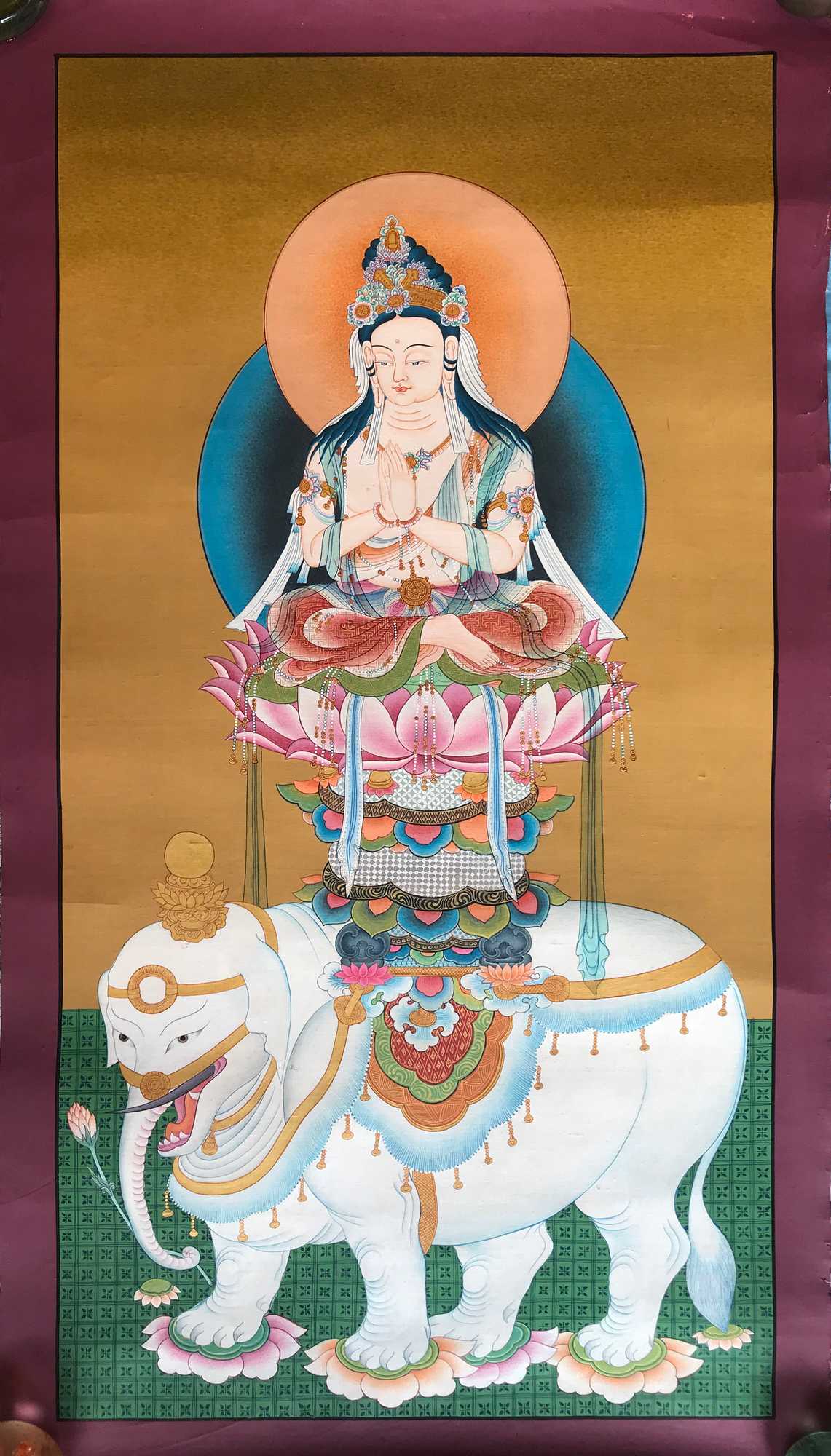









 Best Quality,
Best Quality, 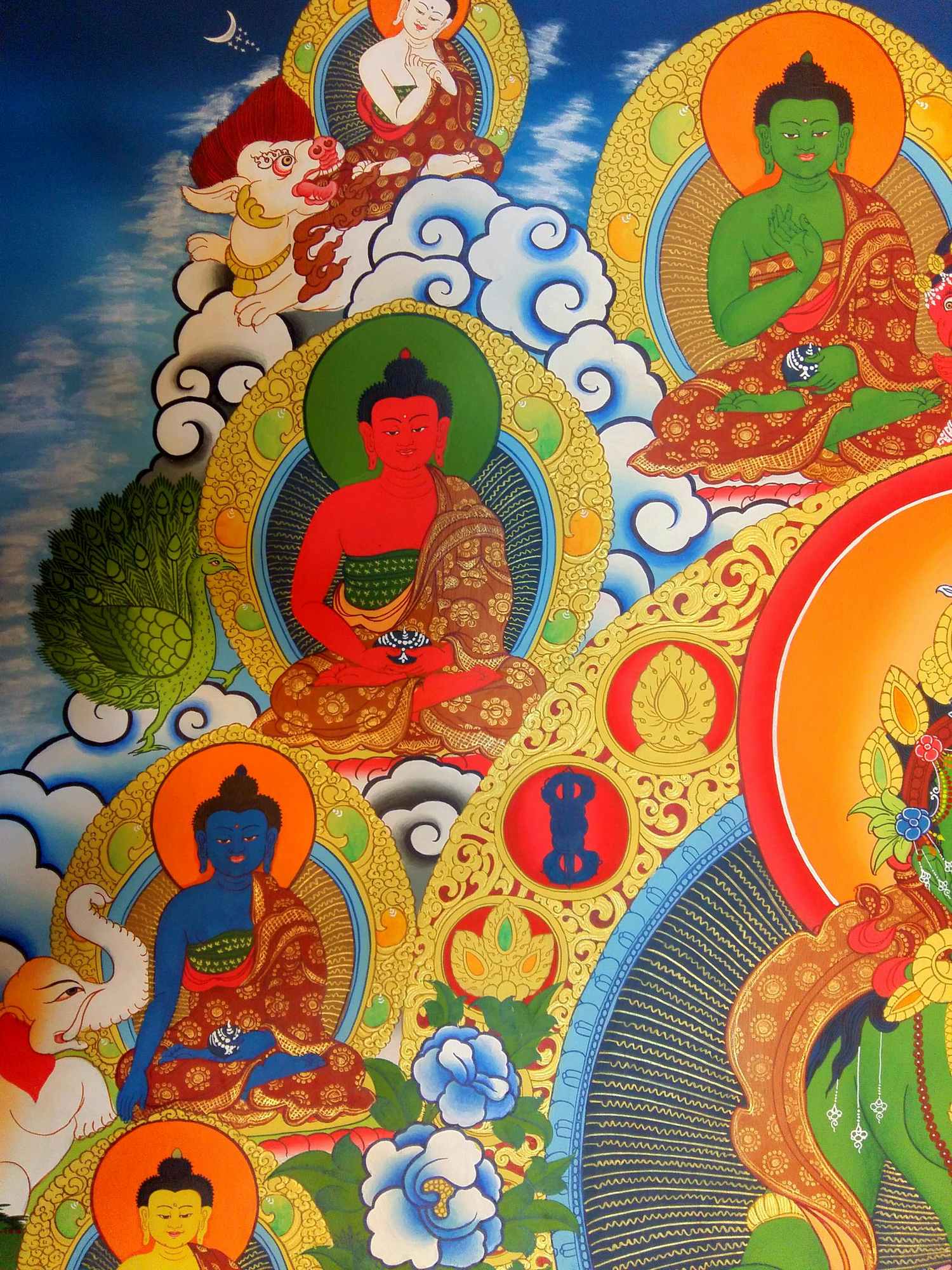 Best Quality,
Best Quality,  Hq Newari Paubha
Hq Newari Paubha 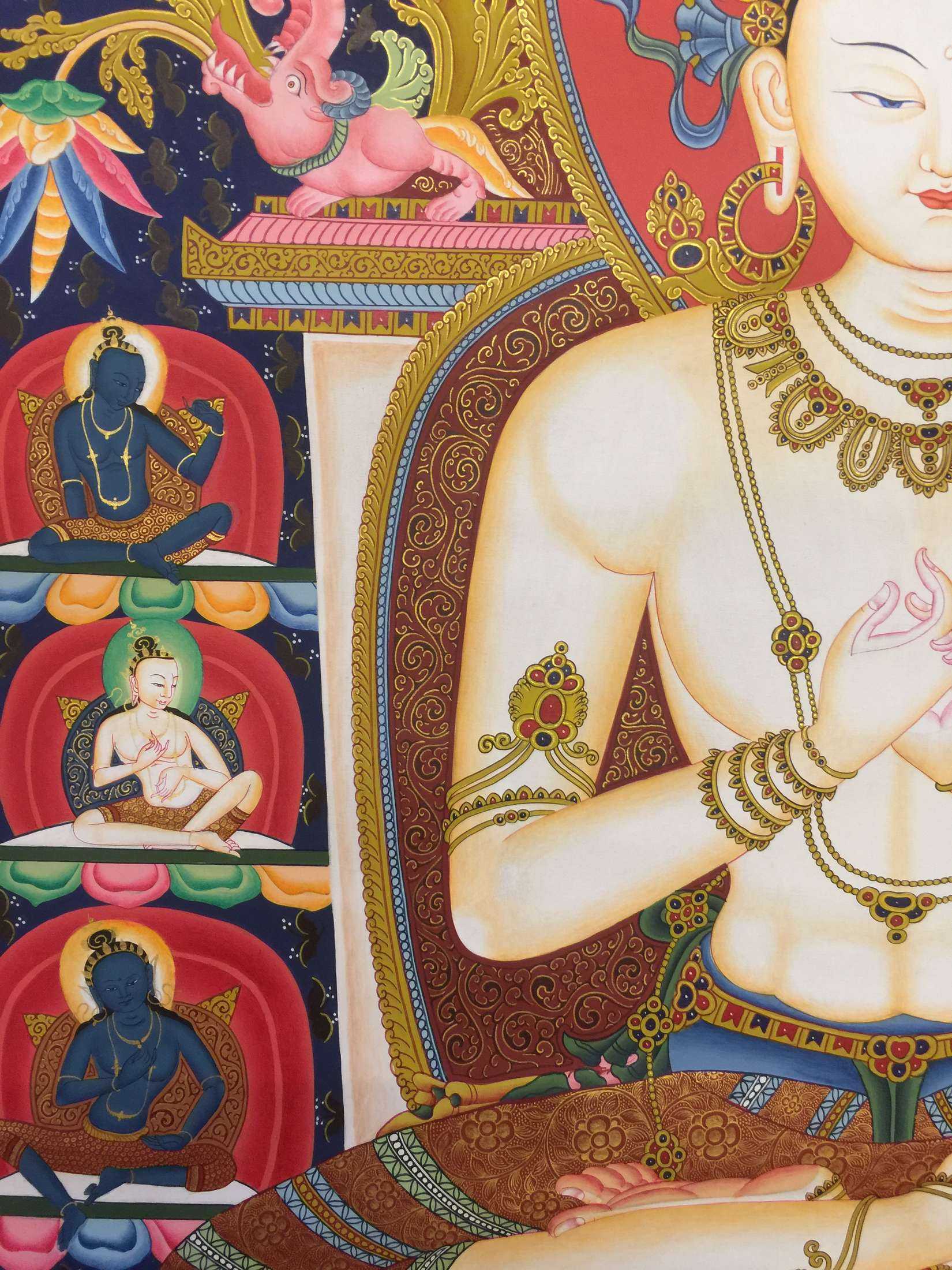 Hq Newari Paubha
Hq Newari Paubha 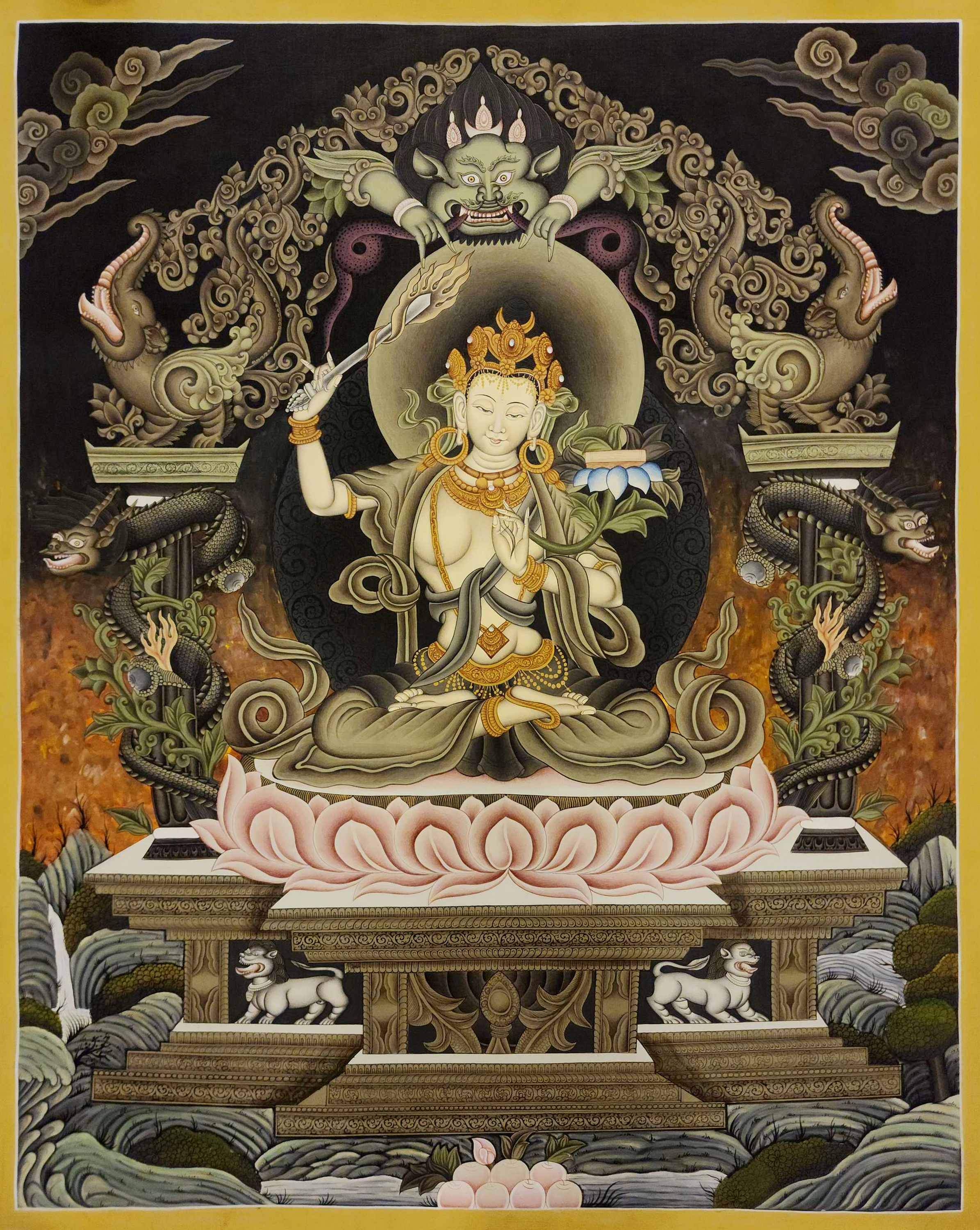 Master Quality, Buddhist Traditional Painting, Newari Style,
Master Quality, Buddhist Traditional Painting, Newari Style,  Master Quality, Buddhist Traditional Painting, Newari Style,
Master Quality, Buddhist Traditional Painting, Newari Style,  Hq Newari Paubha
Hq Newari Paubha 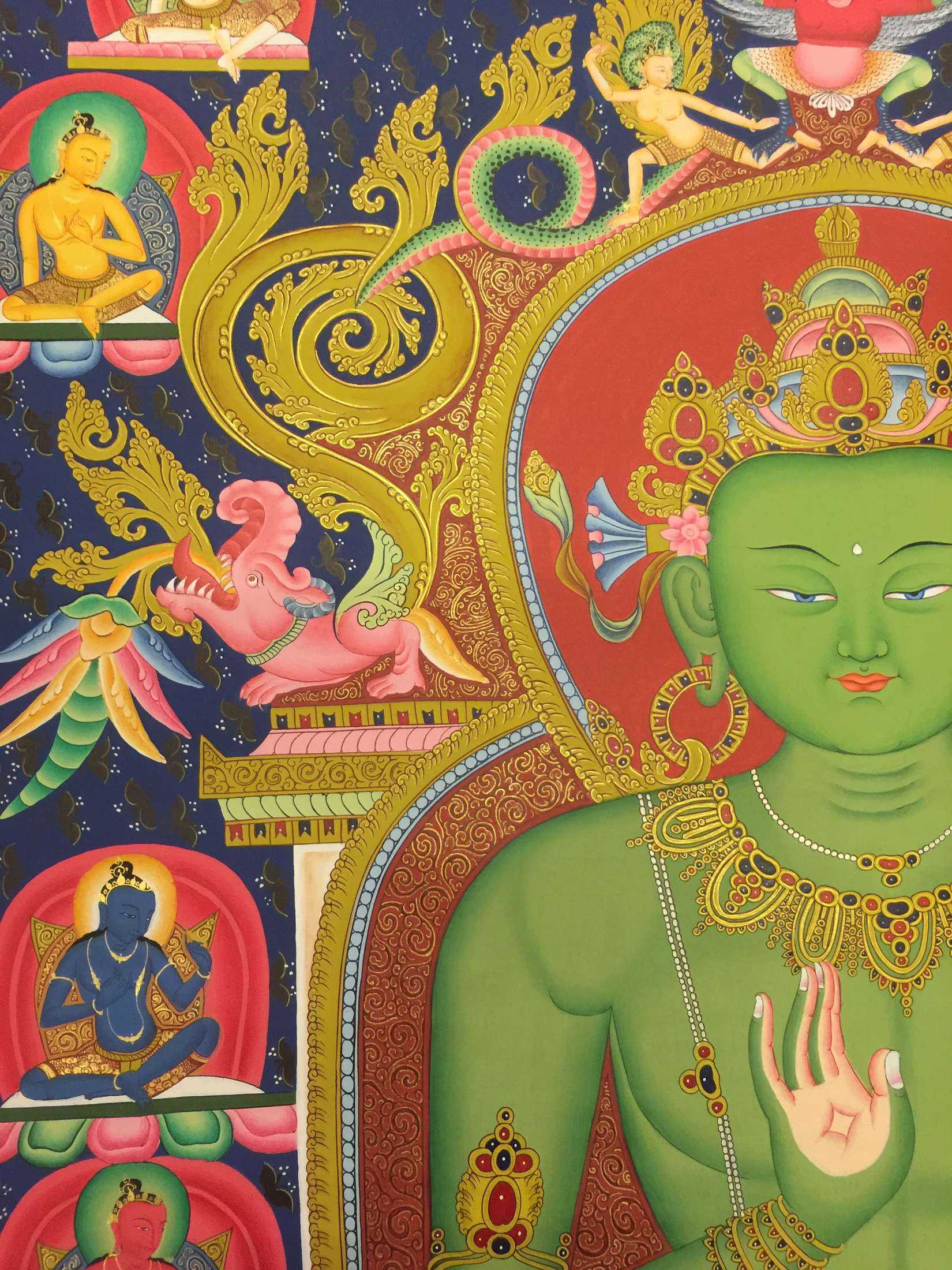 Hq Newari Paubha
Hq Newari Paubha  with Consort,
with Consort,  with Consort,
with Consort, 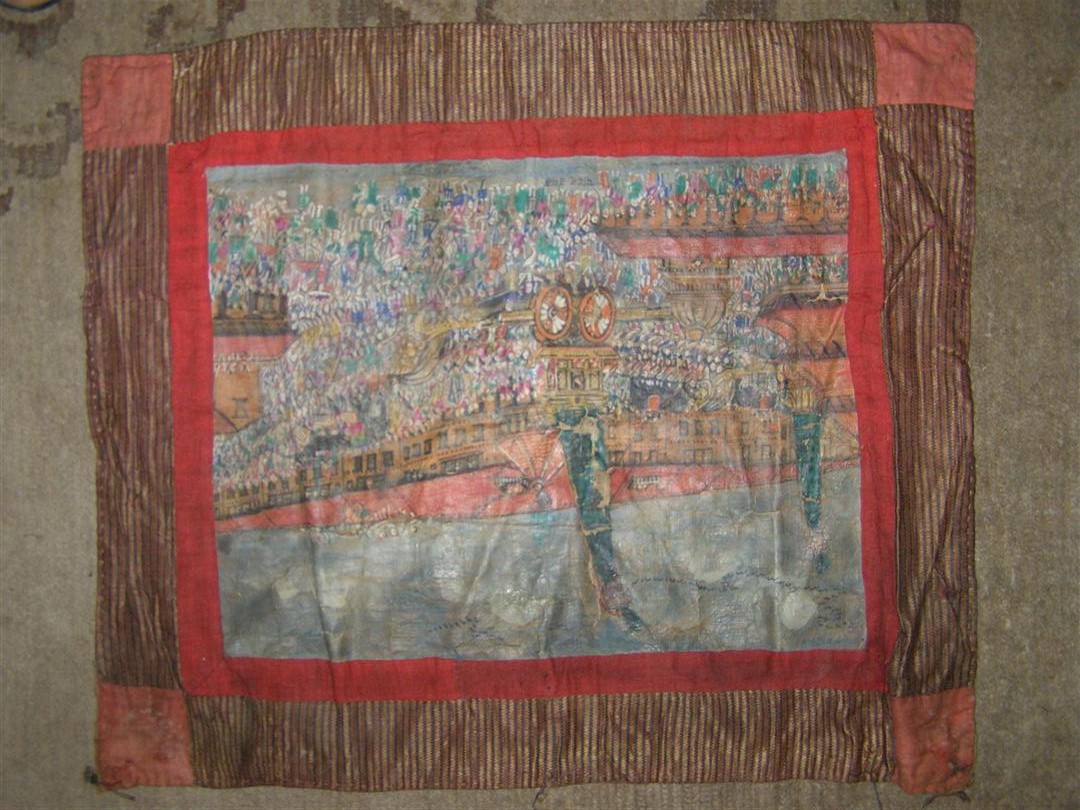
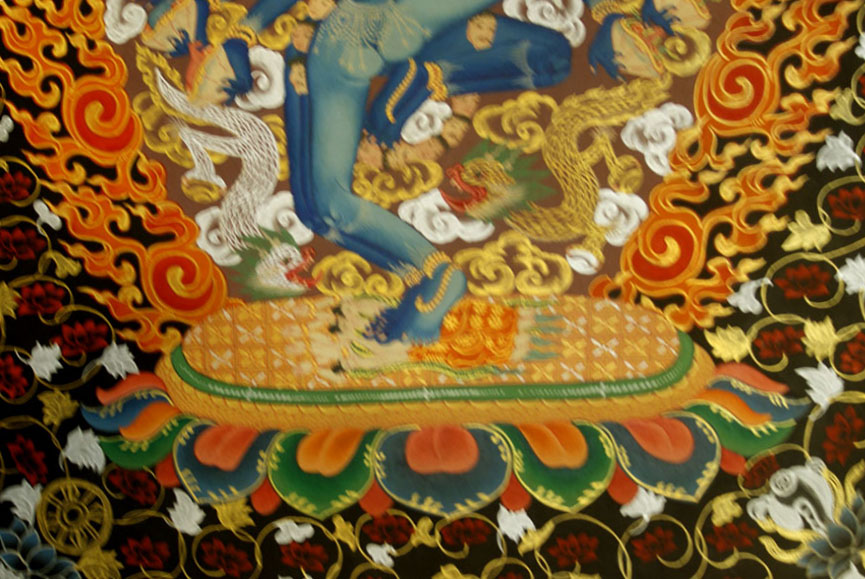 of Hevajra,
of Hevajra, 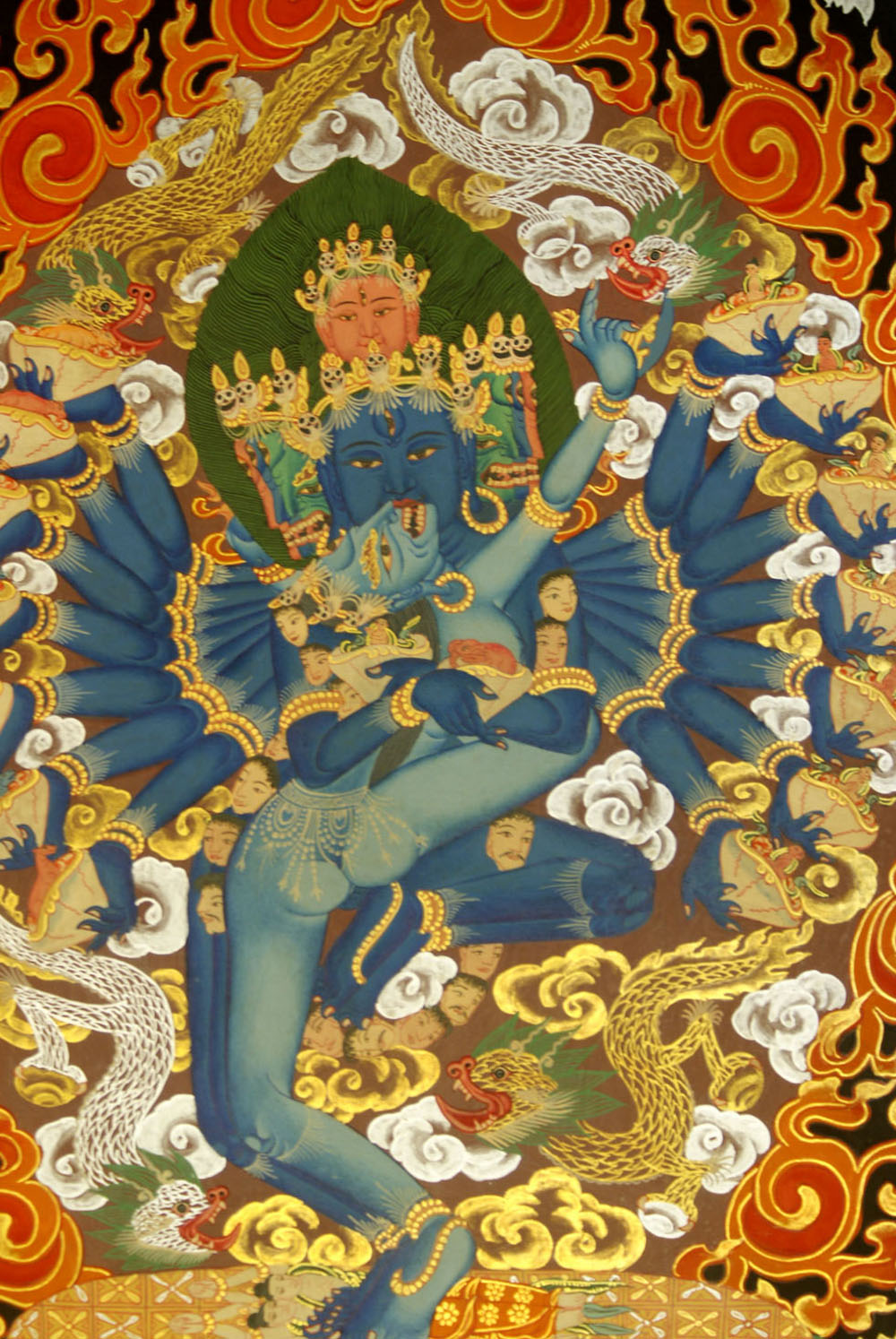 of Hevajra,
of Hevajra, 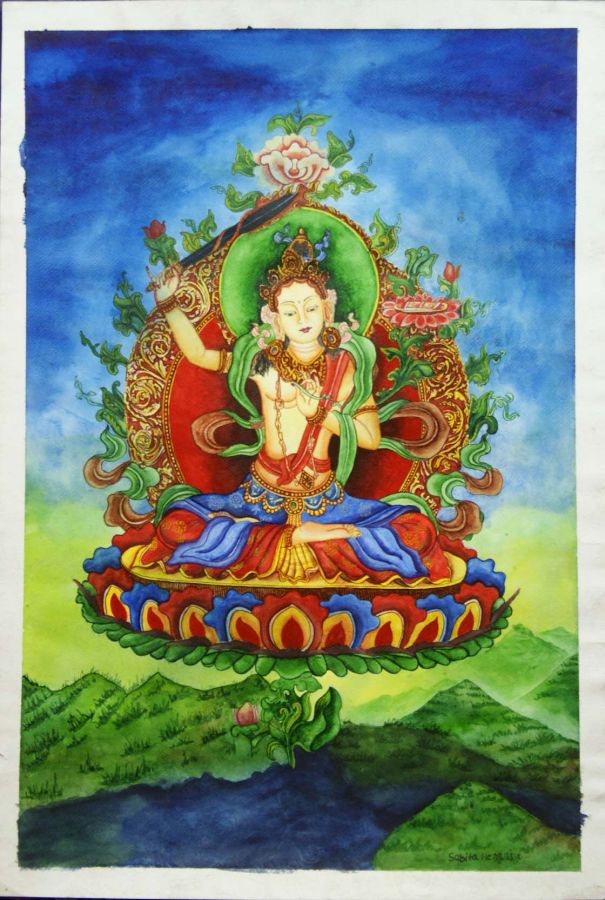 Sold" title="Manjushri In Water Color Thangka,
Sold" title="Manjushri In Water Color Thangka,  Sold" title="Vajrayogini Thangka, Oil Finishing,
Sold" title="Vajrayogini Thangka, Oil Finishing, 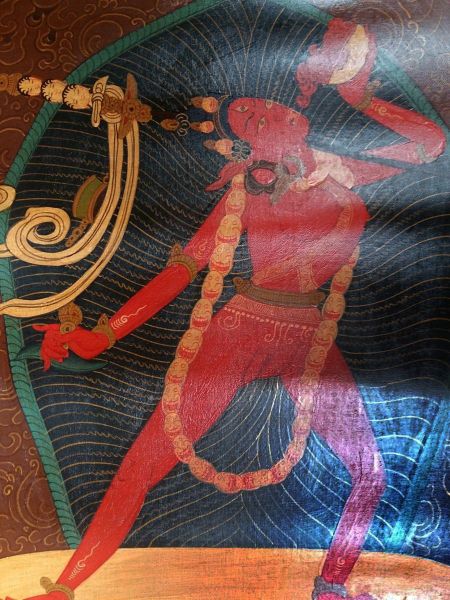 Sold" title="Vajrayogini Thangka, Oil Finishing,
Sold" title="Vajrayogini Thangka, Oil Finishing,  of Green Tara In
of Green Tara In  of Green Tara In
of Green Tara In